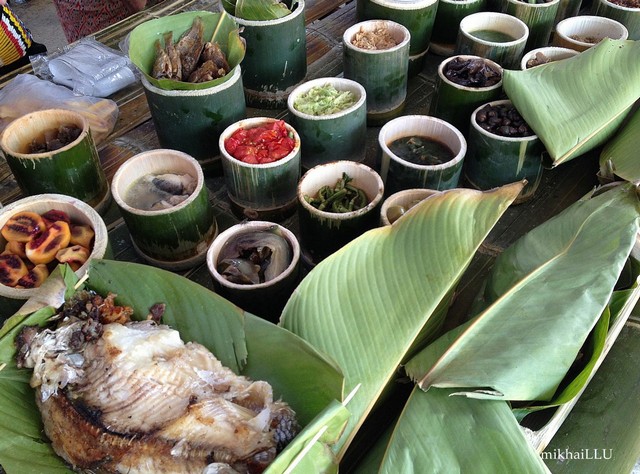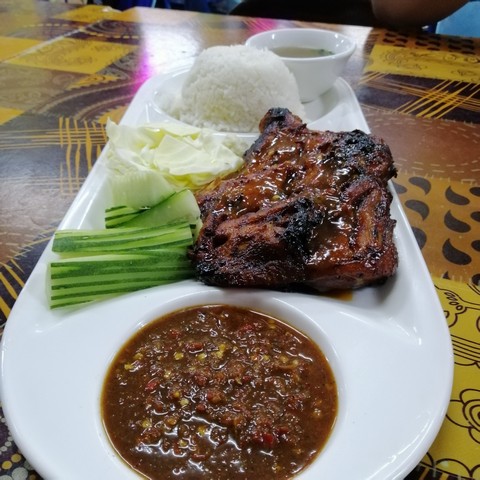From manuk pansuh (chicken cooked in bamboo) to cake lapis (layered cake) and umai (Sarawakian ceviche), Sarawak is not short of delicious and fascinating traditional delicacies that we can share with the rest of the world.
Each dish has its own rich backstory and has a deep tradition embedded to it.
For instance, asi ruas (rice cooked in bamboo) by the Iban community is typically prepared during communal events such as Gawai, wedding and funeral in groups, but it is also used as one of the main offering items to the Gods in the miring ceremony, an intricate religious ritual ceremony.
Thus, this provides an opportunity for us to promote food tourism to visitors as we can introduce local food as one of the main attractions in Sarawak.

Food tourism to promote culture and tradition
When visiting a foreign country or place, getting to know its food is one of the best ways to get to know about the local culture and tradition.
A tourism activity that revolves around experiencing food is referred to as food tourism or gastronomy tourism.

It is described as activity of an individual or a group of people to a location that aims to taste or enjoy the food that is synonym to an area.
Hence, unlike common tourism, food tourism focuses on culinary experience where food and drink that are locally sourced, rather than mere sightseeing.
The experience taught one about and how to appreciate food and drink that reflects the local or national cuisine, heritage, culture, tradition or culinary techniques.

For instance, bubur pedas (traditional Malay porridge dish) being distributed around to the community during fasting month in Sarawak.
The concept suggests people pursue a memorable food or drink experience by developing a better understanding when consuming local food or drink with the essence of culture in them.
By increasing the demand for local food and drinks, food tourism can contribute to the long-term sustainability of local agriculture sector and also to the community.
Food festivals in Sarawak
Here, we are not short of providing food experience to both visitors and locals alike.
For instance, Kuching is known for its annual Kuching Food Festival organised by the Kuching South City Council (MBKS) to commemorate Kuching being elevated to City status on 1st August 1988 and held to boost local tourism and food industry.

Without fail, this fame food festival attracts a large number of visitors from or outside Kuching who has the opportunity to enjoy various events during the festival including dramatic performances, musical concerts, galleries, exhibitions, essay writing competition and so on.
However, as the name might have suggested it, the main attractions within the festival is the food fair itself.
Another famous food festival to be held in Sarawak is Pesta Nunuken or the Bario Food Festival, a traditional Kelabit food and cultural festival.
The three-day festival celebrates Kelabit cuisine, arts, farming, forest and cultural heritage of the Bario Highlands.
The Bario Highland is one of the last surviving intact traditionally farmed and forested highland watersheds in Sarawak and East Malaysia.
Pesta Nukenen was founded in 2005 as a community-owned and funded food and cultural festival. It was organised for the first time in 2006.
The effect of social media
In the era of connectivity, social media plays a vital role in driving interest in food experience.
Hence, this is what makes food tourism popular as social media users share their food experience on social media sites on platforms such as Facebook, Twitter, Instagram, Tik Tok, Snapchat and Youtube.

Organisers of food events or festivals might find it beneficial by doing additional promotion by encouraging people to share their experience on social media.
A study by the United Nations World Tourism Organization (UNWTO) involving the UNWTO Affiliate Members working in different sectors, shows that food events are the most popular tourism product, followed by cooking class and workshops, as well as food fairs highlighting local products.
Similar study also reveals that organizing events is the most used marketing and promotion tool, followed by brochures and advertising.
Aside from that, there is also a trend that involves food blogger, food photography and food account on social media that provides videos, reviews and recommendations.
Some food bloggers, websites and accounts have a massive online following, which would contribute to more publicity.
By doing so, they can write reviews, take pictures and share their experience with their followers.
Overall, this contributes to the enhancement of food tourism.
Despite being a basic necessity, food can be a key factor within the industry sector by adding value to the adding value to the image of a destination and by reinforcing the tourists’ experience in certain places. Food tourism should be viewed as one of the important parts of not only the cultural tourism industry but also part of the economic development






